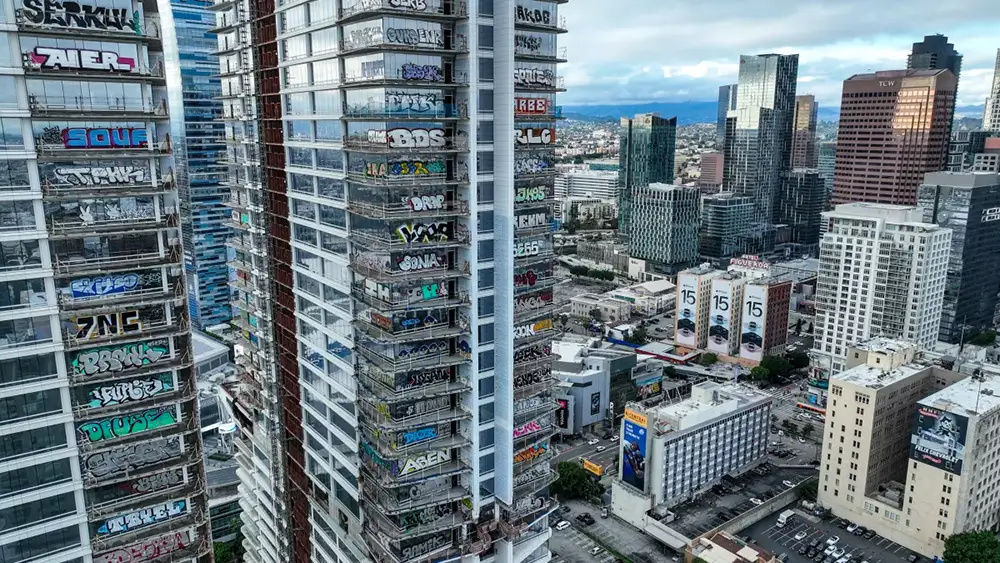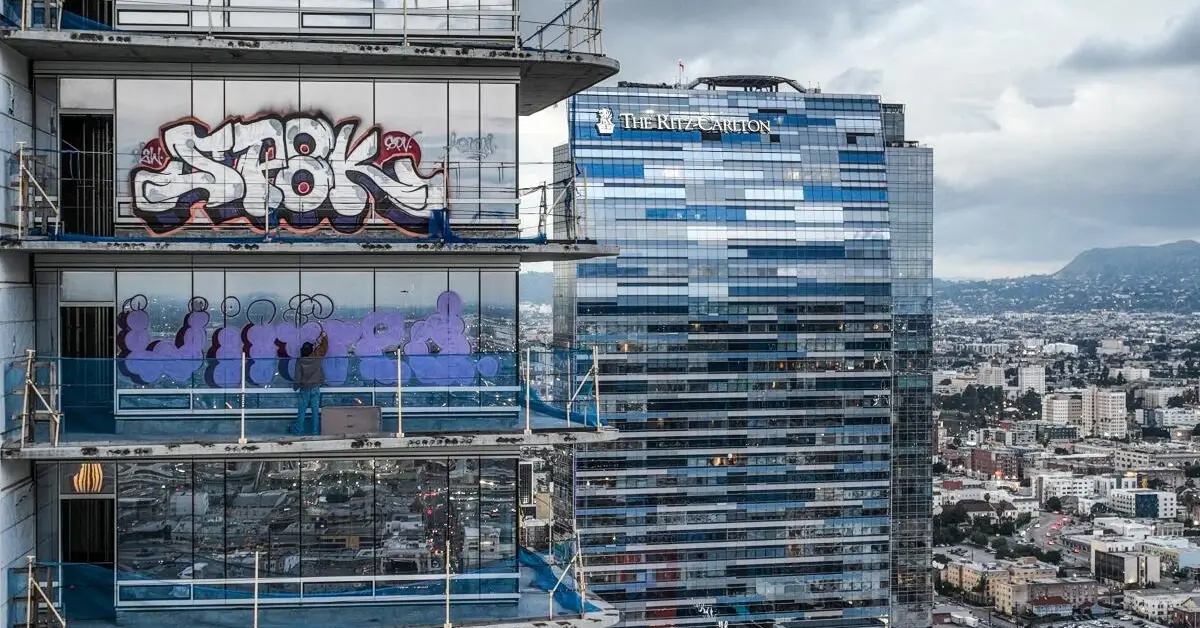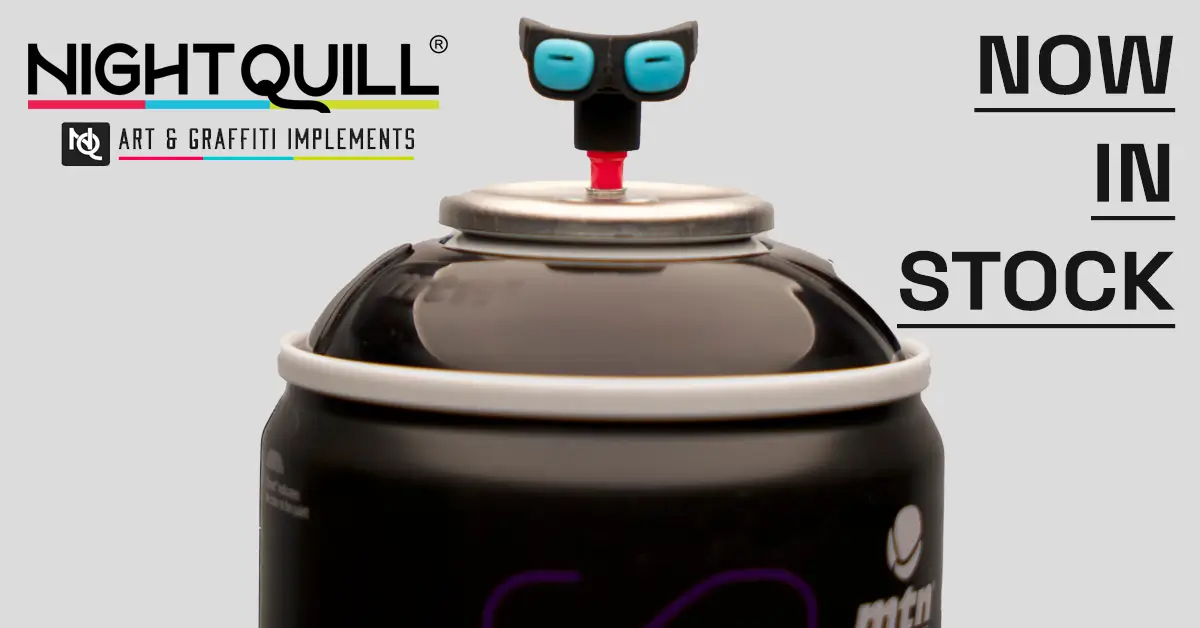LA Highrise Graffiti
From a parking lot situated at the intersection of 12th and Figueroa streets, Michael Lopez expertly guided his drone through the urban landscape surrounding LA Live.
A monitor displayed the gradual ascent of the drone, reaching a height that captured a scene reminiscent of Ansel Adams. The San Gabriel Mountains, shrouded in clouds, stood as a backdrop, with verdant foothills sparkling from recent rains. An abandoned, partially constructed skyscraper adorned with vibrant graffiti added a unique touch to the tableau.
Two other towers suffered a similar fate, each floor of their 20-plus stories featuring graffiti on every corner. The audaciousness and visibility of this act, visible from the 10 Freeway and even the Sixth Street Bridge, coupled with the impending Grammy Awards at Crypto.com Arena, garnered global attention.
This incident had become Los Angeles’ latest Rorschach test.

For civic leaders and those critical of the city, it served as evidence of a downward spiral, another addition to the litany of street takeovers, homeless encampments, and mass break-ins. Oceanwide Plaza, a once-prominent $1 billion real estate project, was now a symbol of halted construction and financial woes.
Contrastingly, for Lopez, the graffitied buildings were a source of admiration. “It’s beautiful. It’s amazing,” he remarked as he shared his drone footage with a friend named Juan G, who had joined him to witness the scene.
“I know it’s getting mixed reviews,” Juan deadpanned, acknowledging potential disapproval from loft residents across the street. Yet, he recognized the uniqueness of the moment, foreseeing changes in rules and increased security.
Though not a fan of graffiti, the author couldn’t help but appreciate the accomplishment of the taggers. The defaced towers became a monument to contemporary Los Angeles, shedding light on issues like overdevelopment, civic corruption, and uncontrolled graffiti.

While some may view the taggers as vandals, the author argued that the decay of the towers reflected the city’s neglect, with the taggers taking initiative to transform ugliness into vibrancy. The use of street art as a medium made their work distinctly Angeleno.
Graffiti has long been a part of Southern California’s working-class culture. The author highlighted the Oceanwide Plaza incident as a form of teamwork that exposed failures in both corporate and government responsibility.
As the author observed the scene, with locals and tourists smiling and appreciating the tagged-up ruins, they acknowledged that while Los Angeles may have its flaws, graffiti-covered structures bringing joy to its residents were among the least of its problems.
[LAtimes.com]
Personally I love this shit. They started at Art Basel in Miami and kept that same energy. My only hope is that writers & vandals worldwide pick up on this shit & start painting highrises and corporate buildings everywhere. That would be the illest.
And shoutout to the developers that refused to press charges on the writers that were arrested. That’s love right there.




